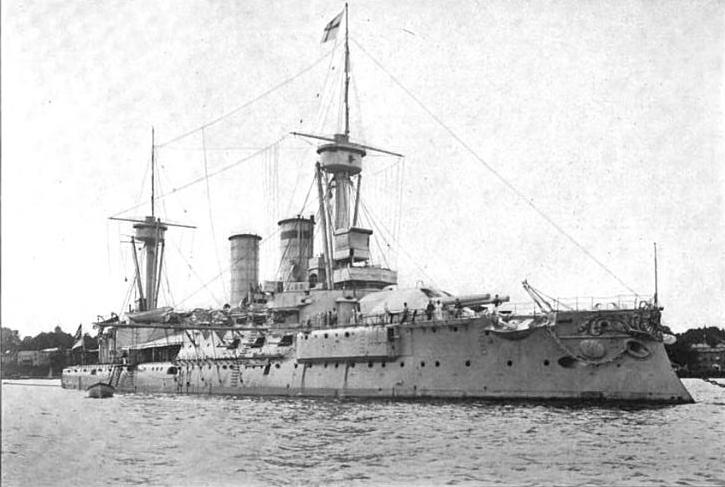German Pre-Dreadnought Battleship SMS Kurfürst Friedrich Wilhelm
SMS Kurfürst Friedrich Wilhelm was one of four Brandenburg-class pre-dreadnought battleships built for the Imperial German Navy in the early 1890s. She played a prominent role in the German fleet during the years before World War I and later served in the Ottoman Navy, where she extended her career into the early 20th century as Barbaros Hayreddin. The ship was named after Frederick William, the Great Elector of Brandenburg, symbolizing the naval aspirations of the newly unified German Empire.
Laid down in 1890 at the AG Vulcan shipyard in Stettin, Kurfürst Friedrich Wilhelm was launched in 1891 and commissioned into the Imperial German Navy in 1894. At the time, she was part of Germany’s first true class of ocean-going battleships, marking a departure from the earlier focus on coastal defence vessels. Her construction reflected the growing influence of naval advocates like General Leo von Caprivi and, later, Admiral Alfred von Tirpitz, who sought to elevate Germany’s naval standing on the global stage.
Displacing about 10,000 tons fully loaded, Kurfürst Friedrich Wilhelm was powered by two vertical triple-expansion steam engines, giving her a top speed of approximately 16.5 knots. Her armament configuration was notable and somewhat unconventional: she carried six 28 cm (11-inch) guns mounted in three twin turrets — one forward, one aft, and one amidships. This design allowed for a strong broadside, but the central turret complicated internal arrangements and contributed to weight distribution issues. Her secondary battery included eight 10.5 cm guns, along with several smaller quick-firing weapons and torpedo tubes. Protection was robust for her era, with up to 400 mm of belt armour, well-armoured turrets, and an armoured deck.
Following her commissioning, Kurfürst Friedrich Wilhelm joined the I Squadron of the German fleet and took part in training exercises, naval reviews, and annual manoeuvres. She served as one of the principal units of Germany’s battle line during a period when the navy was still in its formative stages. In 1900, she was deployed to East Asia as part of the German expeditionary force sent to suppress the Boxer Rebellion in China. Alongside her sister ships, she formed part of the East Asia Squadron, projecting German naval power across the globe and asserting the Empire’s interests abroad.
After returning to Germany, Kurfürst Friedrich Wilhelm continued to serve in a frontline role, but by the first decade of the 20th century, she was increasingly outclassed by newer battleships such as the Deutschland-class and the arrival of the revolutionary dreadnought-type battleships. In 1910, with the Brandenburg-class now deemed obsolete, Kurfürst Friedrich Wilhelm and her sister Weissenburg were sold to the Ottoman Empire.
Renamed Barbaros Hayreddin, the ship joined the Ottoman Navy and quickly became one of its most powerful warships. She participated in the Italo-Turkish War (1911–1912) and saw action in the Balkan Wars (1912–1913), notably taking part in engagements against the Greek Navy. Though her design was dated by this time, her heavy guns and armour made her an important asset for the Ottoman fleet, which lacked modern capital ships.
During World War I, Barbaros Hayreddin served primarily in the Dardanelles region, tasked with defending the strategic straits against Allied incursions. On 8 August 1915, while transporting troops and supplies near the Sea of Marmara, she was torpedoed by the British submarine HMS E11. The explosion caused her to capsize and sink quickly, taking over 250 of her crew with her.



